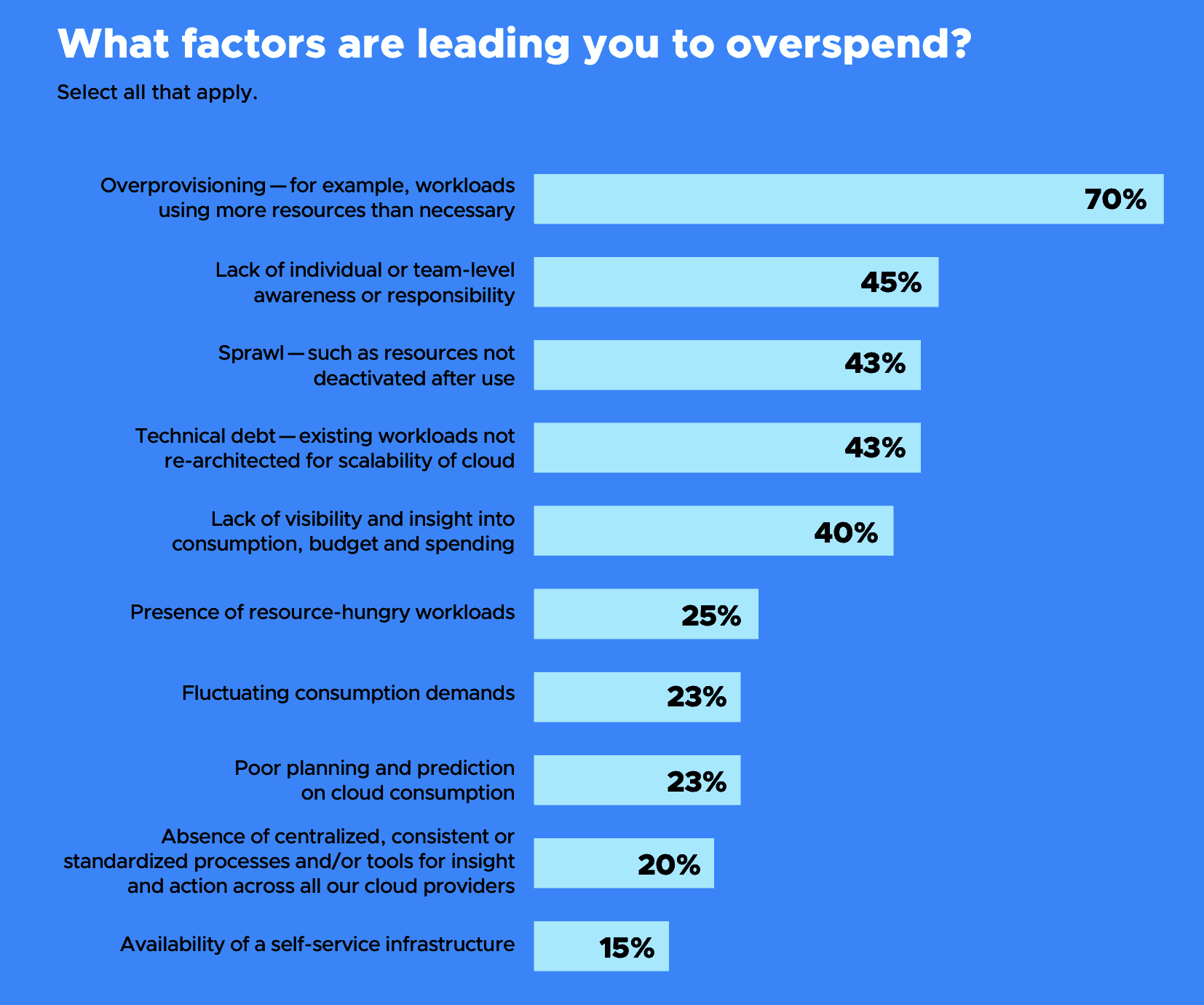A study by the Cloud Native Computing Foundation (CNCF), surveying several FinOps teams specialising in cloud-native technologies, has revealed interesting insights into the impact of Kubernetes adoption on cloud costs.
Around 49% of the companies surveyed experienced an increase in their cloud expenses after adopting Kubernetes, with 32% reporting a moderate increase and 17% a more significant rise.
It was also found that Kubernetes infrastructure often becomes one of the main sources of cloud spending. For 28% of respondents, it accounts for half of their costs; for 10%, it makes up three-quarters of the bill; and for 5%, Kubernetes consumes their entire cloud budget.
Several factors contribute to this increase, including over-provisioning, the proliferation of unused resources, a lack of visibility over resources in use, and a lack of awareness regarding the financial impact of technical decisions.
Rather than questioning the value of adopting Kubernetes, I’d like to offer four thoughts that might help you optimise your costs.
Alpy Cloud offers AWS expertise in the Alpine region (Savoie, Haute-Savoie, Switzerland). Contact us to improve your cloud infrastructure cost management.
Do You Really Need to Aim for the Moon?
Ask yourself if your application truly needs the high level of availability you’ve defined. The higher your availability requirements, the more redundant your infrastructure becomes, and consequently, the higher the costs. With AWS EKS, this could lead to a doubling or even tripling of the number of required nodes.
Although it may be hard to reduce this level of redundancy, you could significantly cut costs by asking yourself:
Quelle est l'How important is it for my customers if my application becomes temporarily unavailable for: pour mes clients si mon application devient temporairement indisponible pendant :
- A few seconds?
- A few minutes?
- A few hours?
Answering this question honestly could allow you to reduce your costs by up to 66%.
Have You Considered Smaller Instances?
Your Kubernetes nodes are currently running on cloud instances, and everything seems to be working fine. But have you tried switching to slightly smaller instance sizes? This could offer the same level of performance at a lower cost.
A best practice is to monitor resource usage and gradually reduce the instance size. An incremental reduction could potentially save you up to 50% on this cost area.
Who Stays Active Overnight?
When you leave the office, you probably turn off the lights and computers. Why not do the same with some of your cloud resources?
If certain environments (e.g., testing, development, demo) aren’t in use overnight or at the weekend, set up automation to reduce consumption during these times. For instance, with AWS EKS, you can scale down the number of nodes to zero during off-peak hours.
Are You Lacking Visibility?
Are your teams aware of your cloud expenses? Do your developers, for example, understand the cost of each environment they deploy? Do your commercial teams measure the financial impact of deploying an application in a new region to meet client demand?
If not, here are some actions you could take:
- Make cloud invoices accessible and discuss them regularly with your teams.
- Talk openly about monthly cost variations and the underlying reasons.
- Enable budget alerts so everyone can see them.
- Set spending limits to encourage thoughtful consideration of trade-offs.
These measures can help raise awareness among all teams about the financial impact of technical decisions and get them involved in managing costs.
